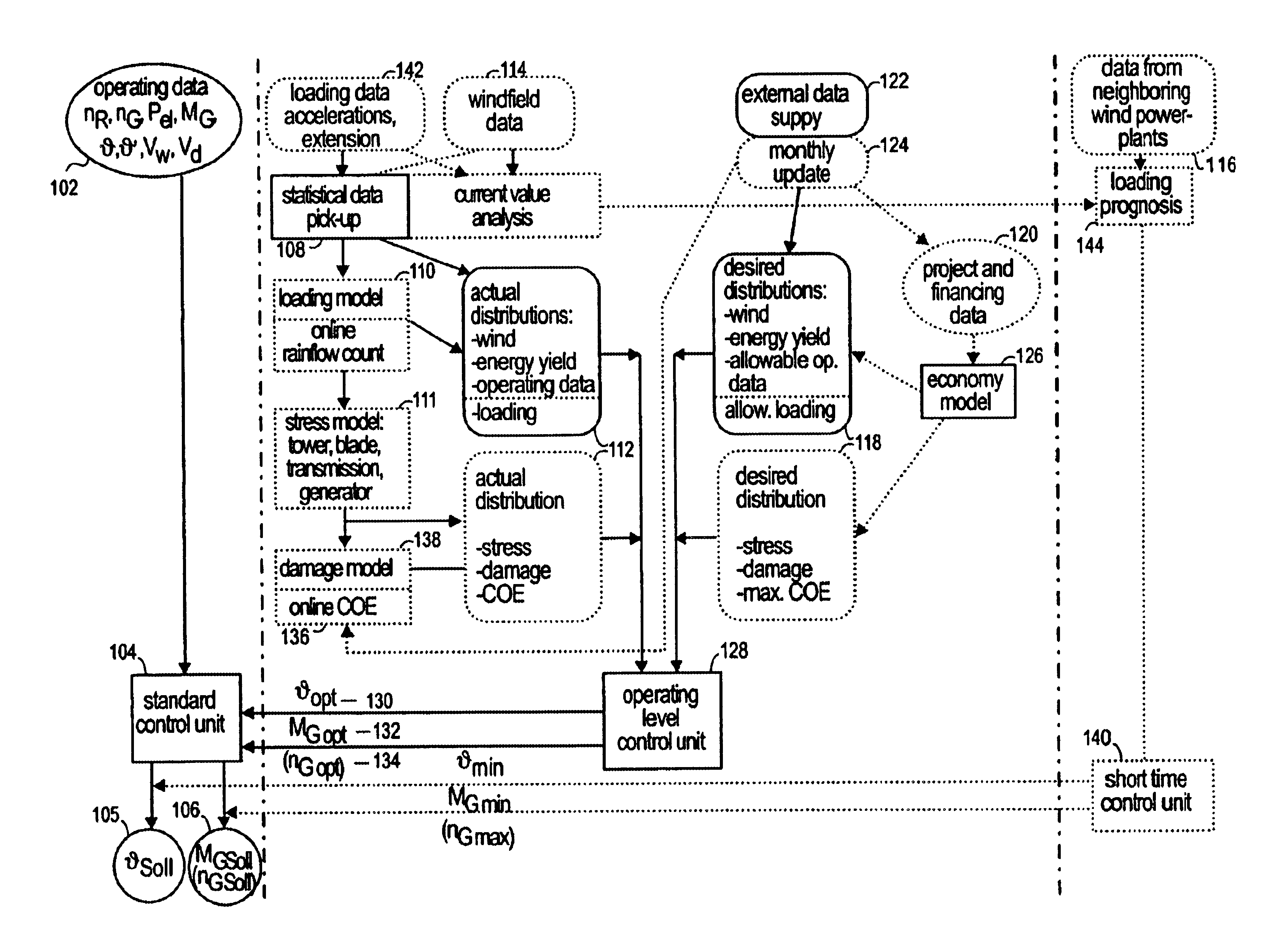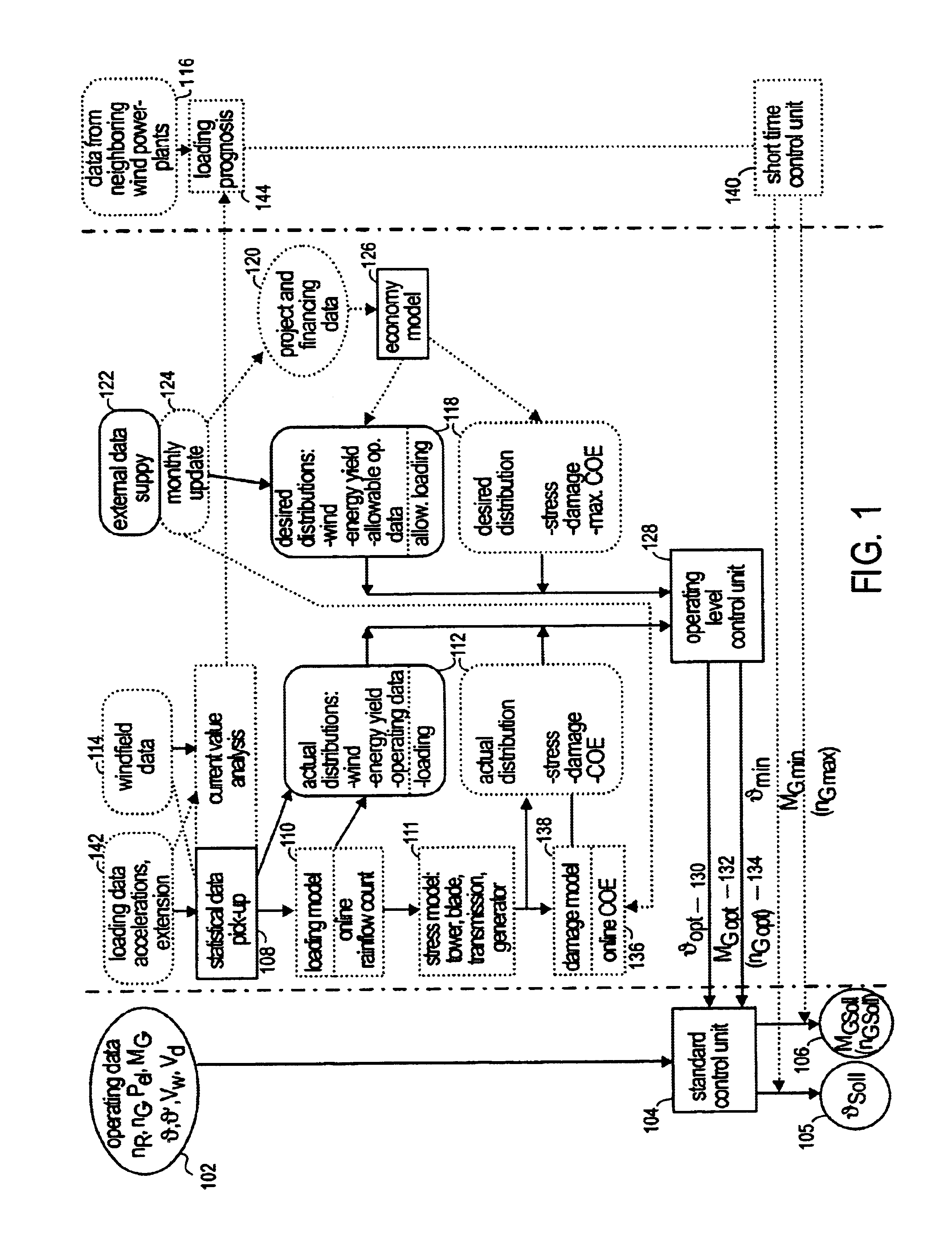Control system for a wind power plant
a control system and wind power technology, applied in mechanical power/torque control, variable speed operation control, wind energy generation, etc., can solve the problems of safety margins being utilized, considerable safety margins of power output left unused in the turbine, etc., to reduce power output, increase component fatigue, and high ratio
- Summary
- Abstract
- Description
- Claims
- Application Information
AI Technical Summary
Benefits of technology
Problems solved by technology
Method used
Image
Examples
Embodiment Construction
In the block diagram, angular boxes are meant to represent signal processing systems or computing modules of a larger software package installed in a signal processing system. Laterally rounded boxes represent input data for the control system, irrespective of whether these data are measured on the turbine or supplied from an external source. Boxes curved on top and bottom represent data stores containing all data which are required for the execution of the control algorithm and are made available through the internal data detection or analysis, or are supplied from external data sources. Elements represented in solid lines are absolutely required for the control system; elements represented in dotted lines are optional components which improve the function of the control system and thus allow for a higher energy yield even though they will cause an increasing complexity of the control concept. Schematically shown to the left of the vertical dash-dotted line in the left: half of the...
PUM
 Login to View More
Login to View More Abstract
Description
Claims
Application Information
 Login to View More
Login to View More - R&D
- Intellectual Property
- Life Sciences
- Materials
- Tech Scout
- Unparalleled Data Quality
- Higher Quality Content
- 60% Fewer Hallucinations
Browse by: Latest US Patents, China's latest patents, Technical Efficacy Thesaurus, Application Domain, Technology Topic, Popular Technical Reports.
© 2025 PatSnap. All rights reserved.Legal|Privacy policy|Modern Slavery Act Transparency Statement|Sitemap|About US| Contact US: help@patsnap.com


